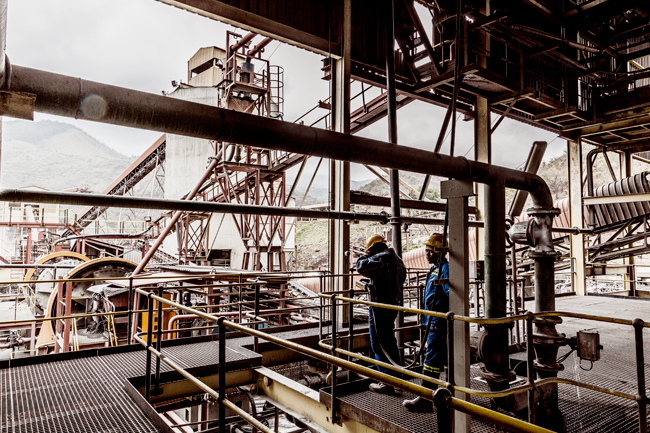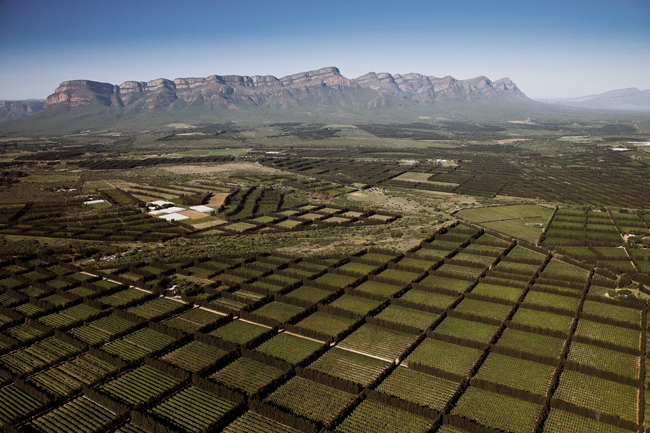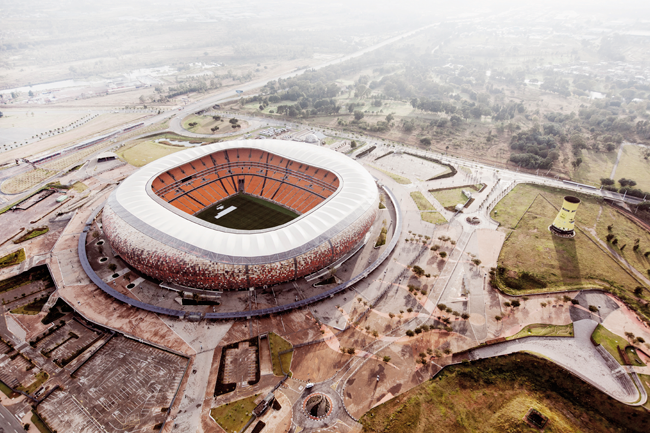In recent years, news out of South Africa has tended to stress political strife, especially within the governing African National Congress (ANC), and its corollary, economic stagnation. While both of these are realities, they can be over-emphasised at the expense of the country’s strengths.
These were on display in London recently, when South Africa’s Deputy President, Cyril Ramaphosa, led a delegation on a bid to host the 2023 Rugby World Cup. The delegation felt that its bid – which included a government guarantee of close to ZAR3 billion – ticked ‘every box – financial, logistical and commercial’. In emphasising the sophistication of the country’s existing sports, hospitality, transport and logistical infrastructure, the delegation highlighted some of the potential green shoots that could lead its economic revival.
A point that the delegation did not feel needed to be made directly is that South Africa is the only country in sub-Saharan Africa that could make this kind of case.
South Africa has hosted big events before. The 2023 bid builds on the legacy of an even larger event, the 2010 FIFA World Cup. The state-of-the-art stadia built then, and other elements of the infrastructure legacy (such as bus rapid transit systems and new hotels in the major cities) are part of the bid advantage presented in London.

So too is the continent’s biggest and most sophisticated tourism sector – structured around beaches and wilderness but also including accommodation ranging from hotels as sophisticated as those anywhere in the world, to cheap and accessible backpacker lodges and B&B establishments.
Many developing countries lack a middle range in terms of accommodation. Often, the alternative to the standard international hotel groups’ offering is the street. South Africa has no such missing middle.
Indeed, the country is distinguished by some very powerful advantages. Its financial markets are deep and of high quality. This year, global benchmarking agency Lafferty rated South Africa’s five big banks the ‘most sound in the world’.
The agency praised the banks for being ‘well-managed, conservatively managed and retail focused’ – all virtues in the banking world. This was despite South Africa’s sovereign debt being downgraded over concerns around the country’s account and revenue collection. The WEF rated these same institutions second-strongest in the world, behind Finland.
Capital is readily available, with the country’s savings and life-assurance companies reaping the benefits of more than a century of market-driven development – the South African savings and investment industry currently controls more than ZAR2 trillion. Nevertheless, investment has been relatively low over the past several years (with the economy driven by consumption and government spending), leading to suggestions that South African business is conducting an ‘investment strike’ within the country.
It has to be said that the country’s strengths should not be interpreted to suggest that the economy is buoyant, or that there are not deep political roots to its stagnation. Economic growth has faltered since 2012 and the country experienced a recession in 2016/17.
The World Bank growth projection for 2017 is a mere 0.3%. GDP growth rates have been below that of the population since 2013 and have been accompanied by persistently high unemployment levels (27.7%). Unemployment levels among young people who have never held jobs is especially troubling.
South Africa’s mining industry, once the backbone of the economy, has been declining for a couple of decades. In part, this is a consequence of maturity – large-scale mining in the country goes back to the 1860s, and some of the richest ore bodies, especially in the gold sector, have long since been exhausted.
However, a portion of the damage has been self-inflicted with the negative consequences of the national race-based indigenisation strategy – broad-based black economic empowerment – being perhaps most visible in mining.
Huge international mining conglomerates – such as Anglo-American (which has strong South African roots) and BHP Billiton – have largely exited the country. These companies and others have criticised the unstable enabling environment with its unresolved requirements for black ownership, threats of increased compulsory state ownership and the power of the state to withdraw licences in terms of the 2002 Mineral and Petroleum Resources Development Act.
Nevertheless, a 150-year history of mining in South Africa has left a developmental legacy to be envied. The country is now dominated by a services sector, which means its economy more closely resembles those of the developed world than those of the rest of Africa. In 2016, services accounted for a least one-quarter of the economy, with trade, catering and accommodation making up another 15.2%
Agriculture has picked up in 2017 after being hammered by two seasons of drought. Under these conditions, the 2016 production of maize – the country’s biggest crop – fell to just 7.78 million tons. However, better rains this year have seen a massive recovery to a record level of more than 16 million tons.
Agriculture is dominated by large-scale, capital-intensive enterprises that coexist alongside low-productivity smallholder activities. The capital intensity of the sector is shown by the fact that it employs a mere portion of the workforce even though 35.2% of the population live in rural areas.
Pundits, ranging from professional commentators to Reserve Bank governor Lesetja Kganyago agree that structural reforms to the economy are held back by South Africa’s political system.
The country has been governed by a single party-dominant system since the first post-apartheid election in 1994. At the centre of this is the ANC, the party that has commanded a majority in every subsequent election, in alliance with the South African Communist Party (SACP) and the country’s main labour organisation, the Congress of South African Trade Unions (Cosatu).
This leading coalition, the Tripartite Alliance, has started to unravel as the various interests wrapped up within it have played out in contradictory directions.
In the second-half of 2017, conflict within the ANC has come to the fore as factions jockey to replace the current leader and President, Jacob Zuma. The contest has been characterised by accusations of gross corruption on the part of the Zuma wing, while its adherents accuse its opponents of obstructing black-economic progress.

To a large degree, these conflicts will be resolved in and after December’s ANC elective conference, where Zuma’s successor will be selected. The two main candidates are the pro-business incumbent Deputy President Cyril Ramaphosa, and the current national leader’s ex-wife, Nkosazana Dlamini-Zuma, former chair of the AUC.
Junior members of the Tripartite Alliance appear to be waiting for this decision before deciding whether or not to remain participants in the coalition.
Beyond the ANC leadership transition lies the 2019 general election, the first in which the governing party faces a serious threat to its majority. A foretaste of what may happen was provided when it lost its majority in three of the country’s metropolitan cities – Johannesburg, Tshwane (Pretoria) and Nelson Mandela Bay (Port Elizabeth) – and was replaced by coalitions of opposition parties.
Whichever party governs South Africa after the next election will face the problem of economic stagnation.
It will have to deal with inefficient state-owned enterprises, including the national electricity and transport companies as well as the national airline, all of which drain the national fiscus and impose heavy costs on the rest of the economy.
Beyond this, attention is turning to potential green shoots in the economy. Tourism offers hopeful signs. South Africa regularly makes it onto lists of the best countries to visit in the world, and Cape Town consistently ranks as a top-10 destination. The number of international tourists arriving in South Africa outstripped the global average by quite some distance last year.
Globally, tourism increased by 3.9% in 2016 (compared to 2015). In South Africa though, the increase was 13%, to more than 10 million international arrivals. Government estimates that tourism accounts for 1.55 million jobs, both directly and indirectly.
South Africa’s bid to host the 2023 Rugby World Cup should be seen as a reflection of the strengths and developments in the country in general. But it’s more than this. The country’s previous hosting of the event in 1995 was a landmark in nation-building, with its iconic pictures of Nelson Mandela wearing a replica of the team captain’s No 6 jersey and the country unquestionably united in a single cause for the first time in its democratic era.
It was heralded as marking the end of a period of political trauma that stretched back to at least the mid-1970s. With the prominent role of politics in the present period of stagnation and strife, a replay is needed.



